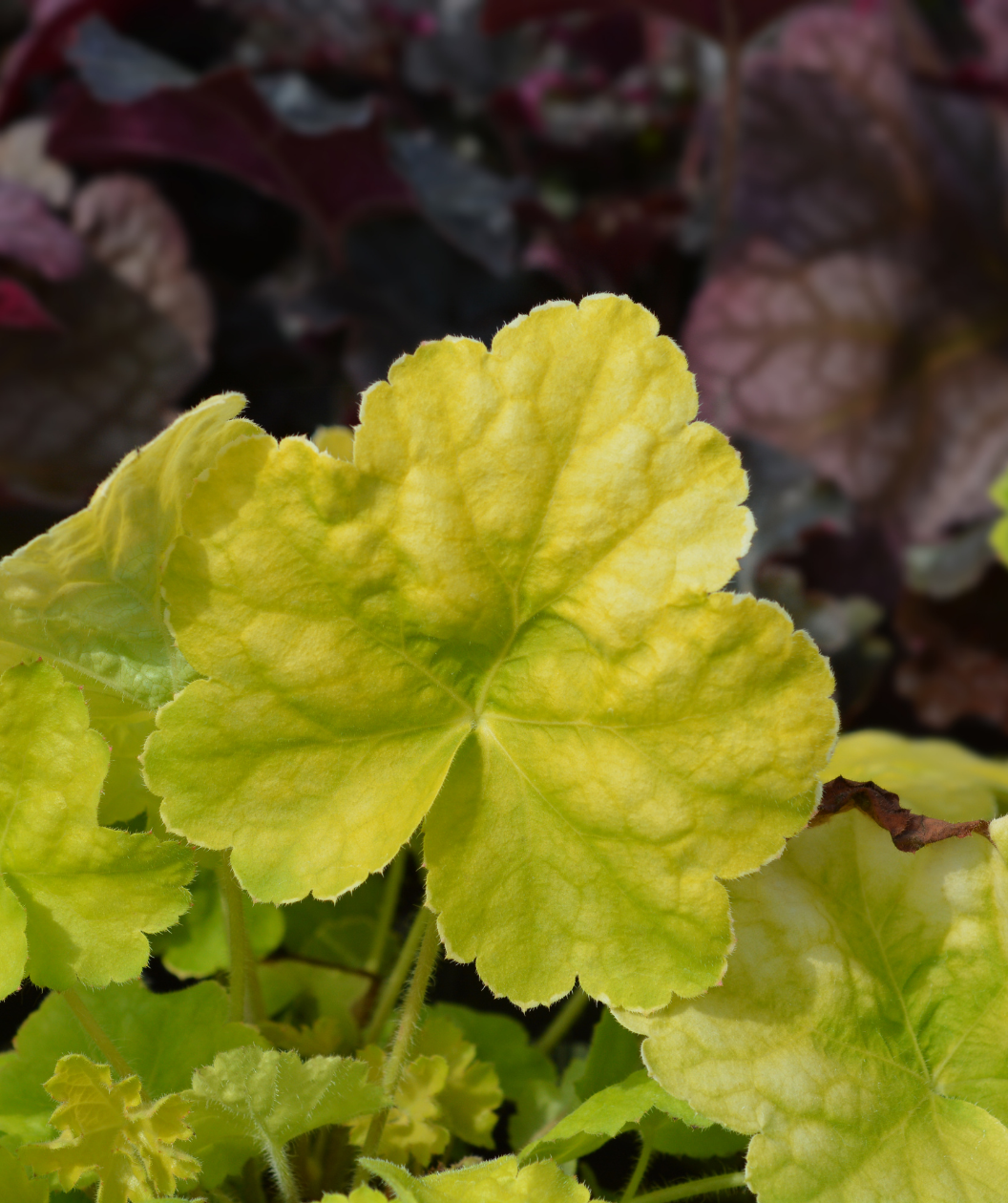

BRIGHT, LIME GREEN FOLIAGE PROVIDES FOUR SEASON INTEREST
FEATURES:
- Ruffled foliage portrays hues of green, lime green and yellow throughout the year
- Sprays of tiny, white, bell-shaped blooms adorn the stems in summer
- Ideal in woodland gardens, cottage landscapes and containers to provide a bright pop of color in shaded location
- Evergreen foliage shines during the darkest days of winter
- Pollinator friendly and deer resistant
- Hand Selected, Fresh from the Grower
- Ships in a plant-safe designed box
Growth Facts
- Hardiness Zone: 4-9
- Mature Height: 18-24" tall
- Mature Width: 18-24" wide
- Exposure: Full Sun/Part Shade
- Spacing: 18-24" apart
BRIGHT, LIME GREEN FOLIAGE PROVIDES FOUR SEASON INTEREST
FEATURES:
- Ruffled foliage portrays hues of green, lime green and yellow throughout the year
- Sprays of tiny, white, bell-shaped blooms adorn the stems in summer
- Ideal in woodland gardens, cottage landscapes and containers to provide a bright pop of color in shaded location
- Evergreen foliage shines during the darkest days of winter
- Pollinator friendly and deer resistant
- Hand Selected, Fresh from the Grower
- Ships in a plant-safe designed box
Growth Facts
- Hardiness Zone: 4-9
- Mature Height: 18-24" tall
- Mature Width: 18-24" wide
- Exposure: Full Sun/Part Shade
- Spacing: 18-24" apart
Why plant Guacamole Coral Bells?
All you need are some chips for dipping! Guacamole Coral Bells are the perfect shade of avocado green, making you hungry for more! These electric lime-green charmers are sure to enchant your landscape with splashing color. Large, ruffled leaves add texture, while clusters of petite white flowers blooming on tall stems add dynamic depth through summer. Both a shade and sun-loving plant, Guacamole Coral Bells makes a stunning display in garden beds or planted in patio containers. Easy to grow, yet make an impressive impact that even the butterflies and hummingbirds can’t resist!
Coral Bells are native Spirits that grow all over North America in different forms. Until the 1990s, gardeners considered them nice garden plants, but nothing too spectacular. Then breeders began to make crosses, and exciting new Coral Bells in brilliant colors began to appear. Guacamole's life began in France, where Sandrine and Thierry Delabroye collected Heuchera seeds and produced many unusual and new varieties of Coral Bells. In 2014, the first Guacamole seedling was discovered by Thierry and propagated to study its reliability and performance. Once it was determined to be as beautiful and hardy as they hoped, it was patented in 2017, and the new seedling was given its fitting name of 'Guacamole.'
How to use Guacamole Coral Bells in the landscape?
Holy Guacamole! Energize your garden with bold, bright green, and light up the shady sections of your yard. The wonderful shade of green accents mixed beds and containers to enhance the many colorful hues of the garden.
Planting Zones
Hardiness Zone: 4-9
How To Plant Guacamole Coral Bells
Most Coral Bells do best in the morning sun, with shade during the hottest part of the day. Bright light will bring out the richest coloring in their foliage. Plant Guacamole in any type of soil; this coral bell is not picky! You'll find that once established, Guacamole is pest, disease, and even deer resistant, plus it will also be drought tolerant. This easy-to-grow spirit will also shine in full shade! So get ready to wow your garden or patio containers in bright colors!
How To Water
Water twice weekly for the first 3-5 weeks; then water weekly for the remainder of the year until winter. When you water, water slowly and thoroughly. Watering needs may be altered due to extreme weather conditions.
How To Fertilize
Incorporate Elements Starter Plant food granular form into the soil when planting. If planting in spring or summer start fertilizing late fall using Elements Starter Plant food granular form on an annual basis each late year. Continue this for three years to get your plant well established.
How To Prune
Each fall, just before winter sets in clean up the previous years foliage and compost it. Be sure your perennials are mulched well for winter protection. Two inches of an organic mulch will do the job. Consider leaving the plant debris in place through the winter and doing your clean up on the weather warms in the spring. While it doesn't make things neat and tidy, the debris provides overwintering protection for insects, their eggs and pupae including our native Viceroy butterfly.




